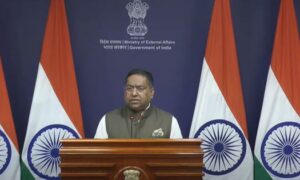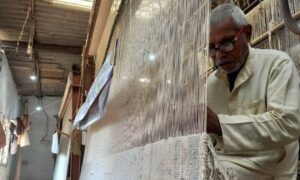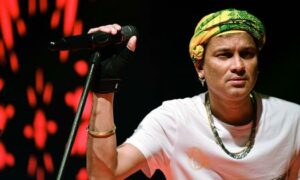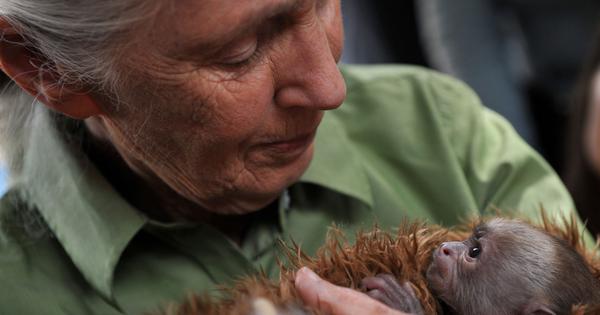
Jane Goodall, who revealed the intimate lives of chimpanzees and gave the modern world a language of hope, has died at the age of 91.
Over the course of six decades, she moved from an unlikely young researcher in the forests of East Africa to one of the most recognisable scientists and conservationists of her time. Her patient fieldwork at Gombe transformed primatology, overturning entrenched beliefs about the uniqueness of humans and forcing science to reckon with animal minds.
She went on to found the Jane Goodall Institute, launch sanctuaries and community programs across Africa, and inspire millions through her Roots & Shoots movement for young people. Her influence reached far beyond science: she became a United Nations Messenger of Peace, an advocate for animal welfare, and a tireless voice for conservation at a time of mounting global crisis. Yet through all of this she remained known simply as “Jane”, a figure who insisted that hope was not naïve but necessary.
When she stepped into the forests of Gombe, on the shores of Lake Tanganyika in Tanzania in 1960, she carried little more than a notebook, binoculars, and an unlikely determination. She was not a scientist by training, but a young woman from Bournemouth with a childhood fascination for Africa, encouraged by a mother who told her never to give up.
Within a few years she had overturned long-held certainties. Her observations showed that chimpanzees were not mere instinctive creatures but societies of individuals: affectionate, ambitious, grieving, even warlike. They made and used tools, once thought the exclusive preserve of humans. Louis Leakey, the anthropologist who had sent her to Gombe, declared that her findings required humanity either to redefine man, redefine tools, or accept chimpanzees as human.
In 1960, Dr. Jane Goodall’s early fieldwork observing chimpanzees at Gombe Stream Game Reserve, in Tanganyika (now Tanzania), unveiled groundbreaking research of shared behaviors between humans and apes.
The Jane Goodall Institute announced on October 1, 2025, that Jane Goodall… pic.twitter.com/c7AkEZsHeh— National Geographic Documentary Films (@natgeodocs) October 1, 2025
A childhood dream
Born Valerie Jane Morris-Goodall in London on April 3, 1934, she grew up during the Second World War in a household where money was short but books and encouragement were plentiful. Her father gave her a stuffed toy chimpanzee, Jubilee, instead of a teddy bear, and it became her lifelong talisman.
From an early age she displayed the curiosity that would shape her life: hiding for hours in a henhouse to watch a chicken lay an egg, climbing trees with a book in hand, and devouring Tarzan of the Apes. By 10 she had resolved to live with animals in Africa.
Lacking funds for university, she trained as a secretary and worked a succession of jobs. At 23, she saved enough from waitressing to travel by boat to Kenya. There she met Leakey, who recognised in her patience, courage, and an untrained mind that could see without scientific prejudice. He first employed her as his secretary, then in 1960 sent her – chaperoned by her mother to satisfy colonial authorities – to the Gombe Stream Chimpanzee Reserve.
Breakthroughs in the forest
At first the chimpanzees fled at her approach. But with quiet persistence she gained their trust, most memorably through David Greybeard, the first to accept her presence. From him she learned of termite-fishing, an act of tool-making that shook the scientific establishment. She gave her study subjects names – Flo, Fifi, Goliath – rather than numbers, insisting on their individuality. For this she was criticised as sentimental, yet her detailed observations revolutionised ethology.
Leakey secured her a place at Cambridge University, where she earned a doctorate in ethology in 1965, despite never having completed a bachelor’s degree. Professors told her she was “doing it all wrong”, but time vindicated her insights. Her pioneering approach – empathy joined to rigorous fieldwork – helped shift the sciences toward acknowledging animal minds.
She would go on to document chimpanzees’ darker side: lethal aggression, cannibalism, even what came to be called the “Gombe Chimpanzee War”. Yet she always described them as individuals, with maternal devotion, sibling rivalry, and bonds of friendship that could endure for decades.
Jane Goodall was one of a few people to earn a PhD without an undergraduate degree.
It was thought that her lack of formal academic training would allow her to remain unbiased by traditional thought and study the chimps with an open mind.
It worked. ❤️ pic.twitter.com/3eCi2oDTJ8
— Encyclopaedia Britannica (@Britannica) October 1, 2025
Scientist to advocate
The work at Gombe soon demanded more than field notes. In 1977 she established the Jane Goodall Institute to sustain the research and protect chimpanzees more broadly. The institute grew into a global organization, supporting sanctuaries and conservation programs across Africa.
In the early 1980s she launched TACARE (Take Care), a holistic initiative in Tanzania that linked environmental protection with health, education, and microcredit, showing that conservation could not succeed without addressing human needs.
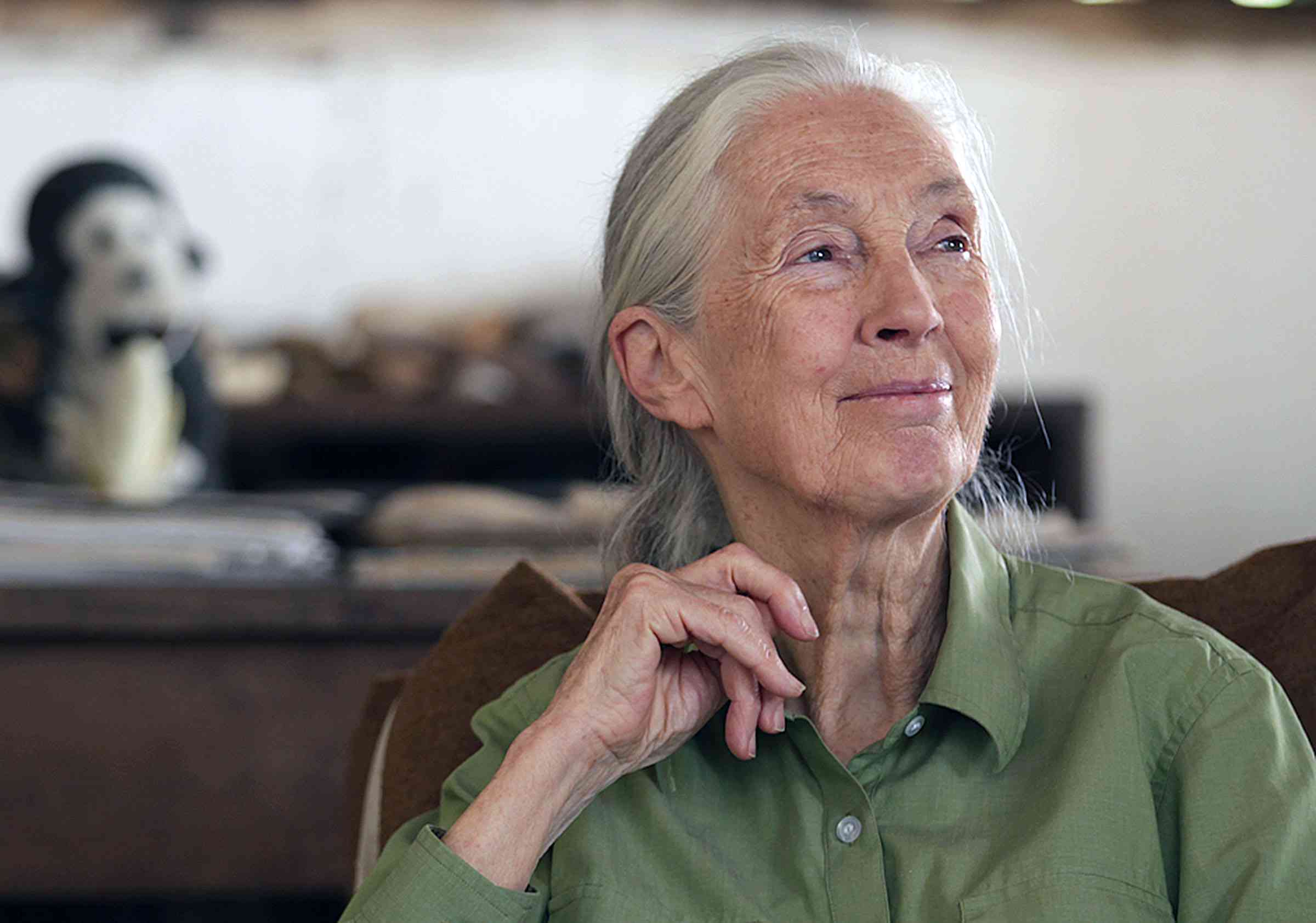
Then, in 1986, came a turning point. At a primatology conference in Chicago she was confronted with the scale of deforestation across Africa, the plummeting numbers of chimpanzees, and the cruelty of laboratory experiments. “I went to the conference as a scientist,” she later said, “and I left as an activist.”
In 1991, she gathered a dozen Tanzanian students on her porch in Dar es Salaam and founded Roots & Shoots. It became a vast youth movement – eventually numbering more than 150,000 groups in over 100 countries – committed to practical projects for people, animals, and the environment. Goodall often said it was her proudest achievement. “What I want to be remembered for,” she explained, “is starting Roots & Shoots and giving people hope, especially young people, and getting them involved in the natural world.”
A global messenger
From the late 1980s onward she rarely stayed still. Into her ninth decade she traveled 300 days a year, lecturing, advising governments, visiting schools, and urging ordinary citizens to act. She could draw a crowd of thousands in a ballroom, yet was most at home kneeling in the dirt with children planting trees or having a conversation with a close friend over a glass of whiskey.
Her message was never naïve. She spoke bluntly of greed, poverty and shortsighted politics. She acknowledged violence in chimpanzees and in humans alike. Yet she held fast to what she called her “reasons for hope”: the power of youth, the resilience of nature, the human intellect when guided by compassion, the indomitable human spirit, and the unexpected potential of technology to aid conservation.
“Every day you live, you make some kind of impact,” she told audiences, urging them to choose wisely. She insisted that empathy and objectivity could coexist: “You can’t share your life with a dog, a cat, or a bird and not know that we’re not the only sentient, sapient beings on the planet.”
Goodall also spoke directly to politics when the stakes demanded it. In her “Vote for Nature” campaign ahead of the 2024 elections, she warned: “Vote as if our children’s lives depend on it – because, truly, they do.”
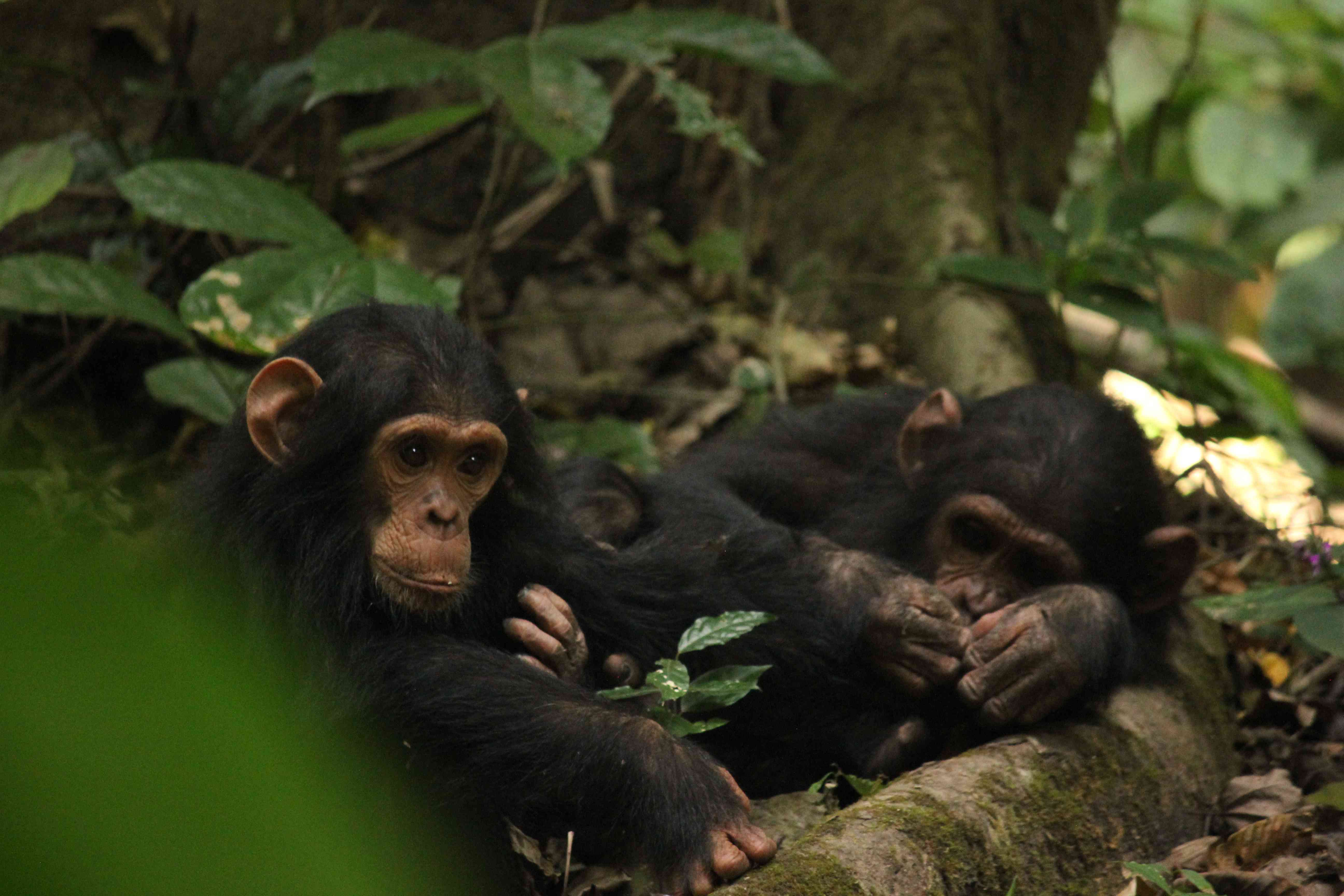
Encounters and influence
Her influence was magnified by her gift for communication. National Geographic once cast her as “the beauty and the beast” – a fair-haired young woman in the jungle with mysterious creatures – and she became a media icon. She acknowledged this double life with wry humor: “There are two Janes. There’s the one talking to you now, just me, Jane. And then there’s the icon built up by Geographic, Discovery, the media. This Jane has to maintain the icon’s image. I can’t fully grasp what’s happened… but I intend to make the most of it.”
Yet she never lost her direct touch. Days after her 90th birthday she spent an afternoon with children, crouching to their eye level to tell stories and showing them videos of clever rats on her iPad. “Everyone can contribute,” she liked to say. “Some may have a larger platform, but every effort counts.”
She also championed empathy as an indispensable tool. “Empathy and objectivity can coexist,” she insisted. “People will not rally to protect what they don’t know. That’s why it’s crucial to engage children with nature as early as possible.”
“Only if we understand, can we care. Only if we care, we will help. Only if we help, we shall be saved.”
“What you do makes a difference, and you have to decide what kind of difference you want to make.”
Jane Goodall was the best of us. pic.twitter.com/a5Z3end4Ly
— Danny Deraney (@DannyDeraney) October 1, 2025
A life in full
Her personal life was less public but no less adventurous. In 1964, she married the Dutch wildlife filmmaker Hugo van Lawick, with whom she had a son, Hugo Eric Louis, known as “Grub”.
They later divorced, and in 1975 she married Derek Bryceson, a Tanzanian parliamentarian and head of the national parks, who died of cancer in 1980. She is survived by Grub, three grandchildren – Merlin, Angel, and Nick – her sister Judy, and a worldwide community of students, colleagues, and admirers.
Over her long career she wrote more than 25 books, from the scientific The Chimpanzees of Gombe to children’s tales and spiritual reflections like Reason for Hope and The Book of Hope. She featured in documentaries, IMAX films, and the Academy Award nominated Jane. In 2019, National Geographic launched Becoming Jane, a traveling exhibition of her life’s work.
Her honors were countless: the Kyoto Prize, the Templeton Prize, the French Légion d’honneur, the Benjamin Franklin Medal, the United States Presidential Medal of Freedom in 2025, and designation as a Dame of the British Empire. Los Angeles even declared April 3rd “Dr. Jane Goodall Day”. Yet she preferred the company of Roots & Shoots members to the applause of diplomats.
Star at the tunnel’s end
Goodall often described humanity as standing at the mouth of a long, dark tunnel. At the far end shone a single star. “That star is hope,” she would say. “However, it’s futile to just sit and wonder when it will come to us. We must gird our loins, roll up our sleeves, and navigate around all obstacles that lie between us and the star.”
She was, to her last days, tireless. On the morning of her death she had been scheduled to meet California students to plant trees in wildfire-scarred hills. She remained, as she once put it, simply “Jane” – a woman who believed that compassion and action were inseparable, and that even in the face of grim realities, despair was not an option.
Her legacy endures in the forests of Gombe, where her research continues; in the sanctuaries and community programs of the Jane Goodall Institute; in the millions of young people who have passed through Roots & Shoots; and in the broader human understanding that animals, too, are sentient beings with minds and emotions.
She reminded us, above all, that hope is a discipline. “Every individual matters. Every individual has a role to play. Every individual makes a difference,” she told audiences for more than half a century. Those words remain her truest epitaph.
This article was first published on Mongabay.
📰 Crime Today News is proudly sponsored by DRYFRUIT & CO – A Brand by eFabby Global LLC
Design & Developed by Yes Mom Hosting

